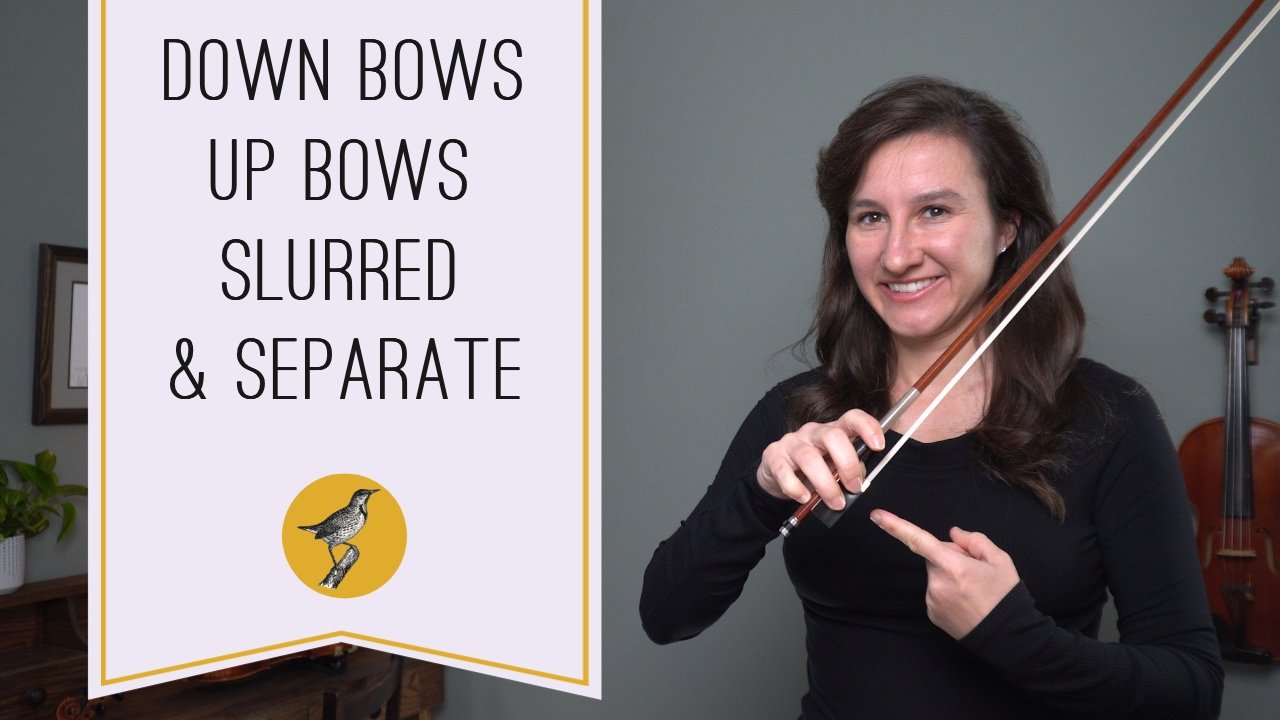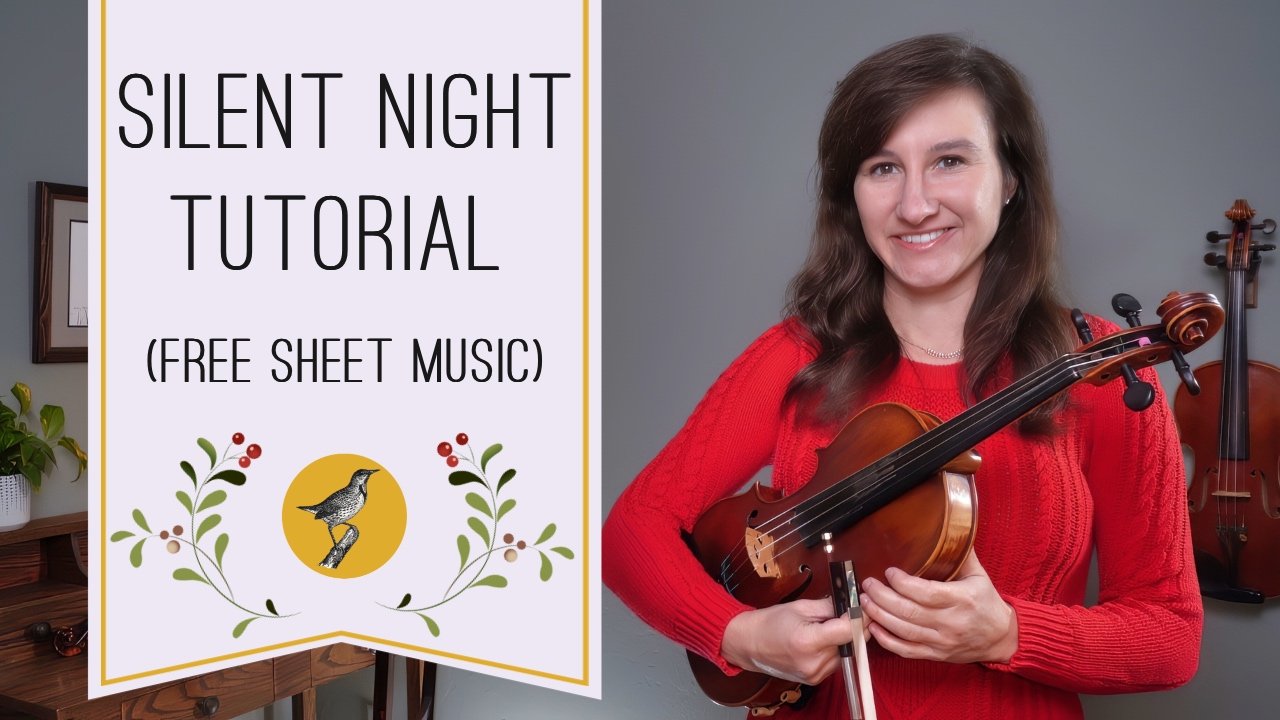5 Exercises to Help You Play Fast on the Violin
/Playing fast on the violin and sounding good is something we all have to practice, no matter how advanced you are.
You might also want to visit 5 Reasons You Struggle to Play Fast on the Violin to help you understand why you’re struggling. This blog will also help you fix any bad habits that could be keeping your from playing fast.
Here are my top 5 exercises to help you play faster and cleaner on the violin!
First of all, isolate that fast passage and isolate groups of notes inside of that larger passage. For instance, don’t try to conquer all of these notes at once.
Divide the passage into groups of 4 notes or groups of 8 notes.
Try each of the following exercises with each of the smaller groups and then combine and do the exercise again with the whole passage. With the right practicing mindset, you can start to play violin faster and cleaner!
#1 Add a Note
Isolate your fast passage and start by playing just the first two notes. When that sounds clean, add the third note, then the fourth note, and so on. Remember, you can do this for each small group of notes, starting the process over again with each group and then try doing the whole passage, one note at a time.
Taking our original first passage as an example, this is how we would use this technique to gradually speed up the passage.
Play just the first two notes
then add the third note, repeat, Add the 4th note, repeat, etc.
#2 Loop Passages
Take a small group of notes, and play it at a slow tempo, repeat the passage, like you’re playing in a circle. When you can play the passage cleanly at a certain tempo, gradually start speeding it up with each repetition.
For instance, from our original passage, we would take the first grouping of sixteenth notes and loop it like this.
#3 Long Short/ and Short Long
Imposing rhythms onto your tricky passage is one of the best things you can do to clean up a fast passage and play faster on the violin. Not only are you working on speeding up the left hand fingers, you’re also making sure your left and right hands are coordinated as you get faster.
When you write the rhythms down, it looks a lot more complicated than it is. Play these exercises by ear. But here’s what the rhythms would look like.
Take a passage of 8th notes or 16th notes and instead of playing the notes as written, add in this rhythm as you play (you don’t have to write it down).
Long Short Rhythm/Making the first note long and the second note short
Working in groups of two, making the first note long and the second note short. Long short long short, etc. Play through the whole passage this way and then reverse the rhythm and do it again. Now play the first note short and the second note long.
When you practice this way, your’e working on speeding up notes, but not all at once. You’re working on speeding up only two notes at a time. When you reverse the rhythm you work on speeding up two different notes. When you’re practicing fast passages with these rhythms, hold the long note for as long as you want. Use that long note to think about the next two notes.
Once you practice this this, way try playing the whole passage with the normal rhythm.
#4 One Our of Every 4
This is a similar technique for playing faster on the violin. This rhythm works with 8th notes or 16th notes. Instead of working in groups of two, you’re going to be working with groups of four notes. Make the first note of every four notes long. Play through the whole passage this way.
Make the first note of every grouping long and the next three notes short
Then make the second note of every four notes long. Then make the third note long, then the fourth note long.
Do you see how you’re speeding up three notes at a time? As you do different variations of that rhythm, you’re speeding up 3 different notes each time.
This technique for speeding up your playing on the violin also works for groups of 3, like triplets. Simply move which note is the long note.
Once you finish practicing this technique, always try play the whole passage with the normal rhythm.
#5 Up 4 Back 2
It’s always great to use a metronome to help you gradually speed up fast passages on the violin, but I love the up 4 back 2 technique when it comes to speeding up tricky spots. Start with whatever beat mer minute where you can comfortably play the passage. Now go up 4 clicks and play the passage again. Now go back two clicks and play it again. Repeat the process, up 4 back 2. When you play the up 4, it might feel a little hectic and rushed. Then when you slow it down to the back 2 tempo, it feels relaxed and doable, but you’re still faster than your original tempo. So you’re tricking your mind into thinking that playing faster isn’t that bad. You can also do this with up 10 back 5.
I hope these 5 techniques help you speed up tricky passages on the violin. They’re my go-to exercises anytime I need to speed up a passage, clean it up, or just get more comfortable with the finger patterns or bowings.
Let me know in the comments below if it’s helpful or if you have other techniques to help you play faster.
Happy Practicing!

























![10 Best Violins for Beginners [2024] A Violin Teacher’s Ultimate Guide](https://images.squarespace-cdn.com/content/v1/554545e3e4b0325625f33fa6/1600433065588-JQV56M1W9LNI833AVGEE/10+best+violins+for+beginners+2020.jpg)



